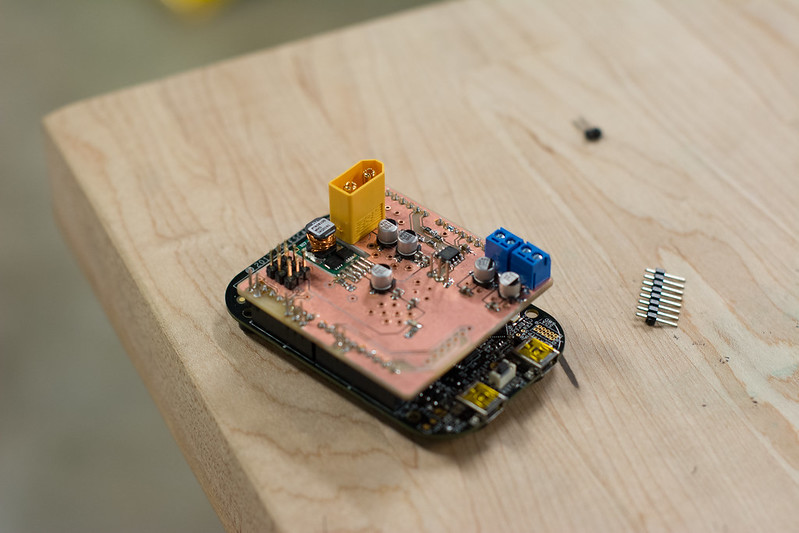Shorter projects and experiments
Welding
04 Jan 2016
Laser welding two plastic films together with a presser foot for more consistent seals
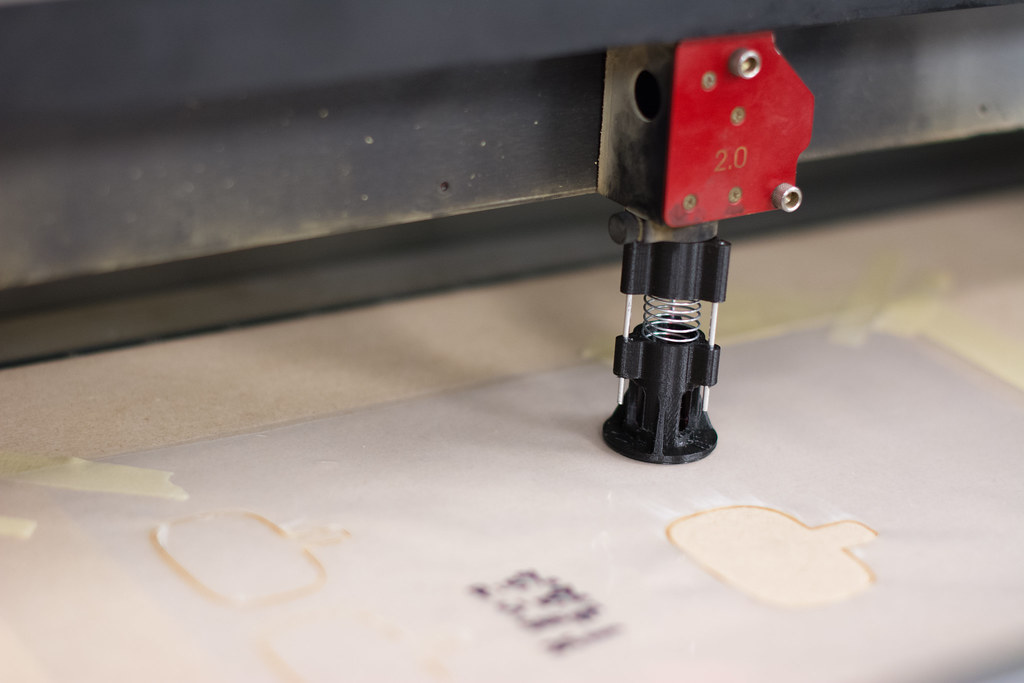
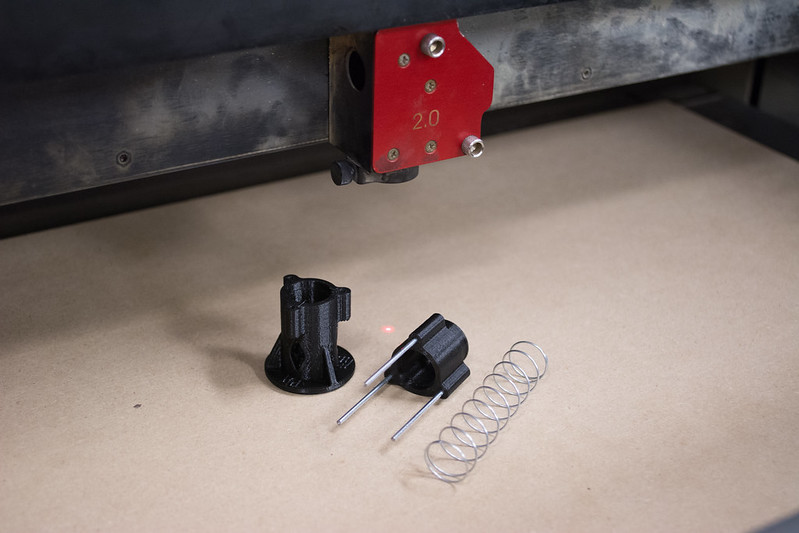 Spring loaded to keep the material flat
Spring loaded to keep the material flat

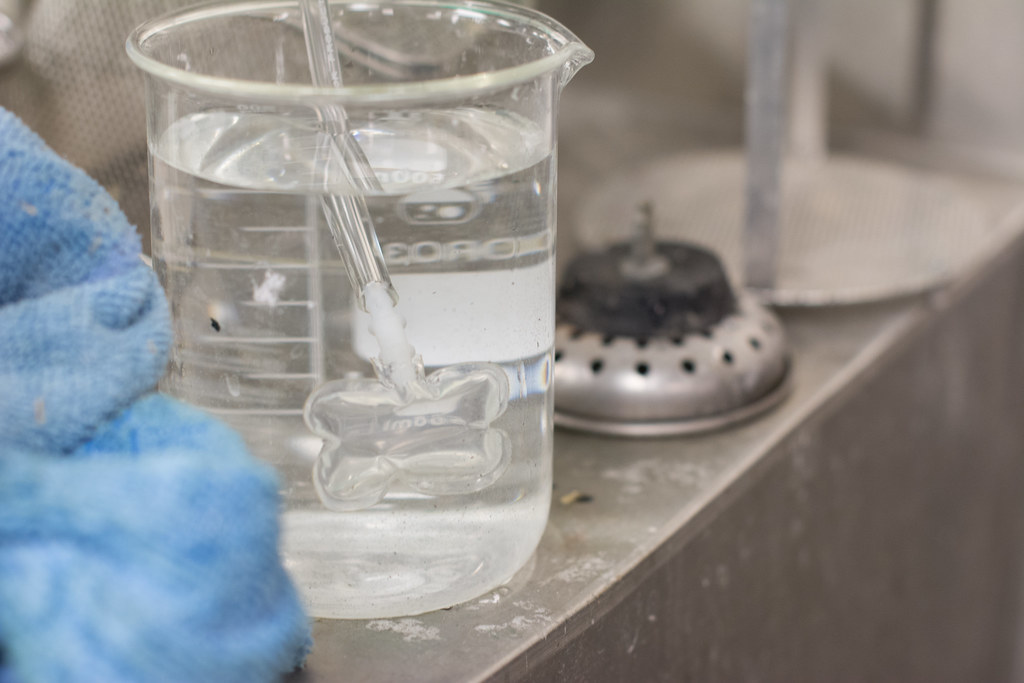 Checking for bubbles
Checking for bubbles
Multiplanar
10 Dec 2015
Final project for Computational Design + Fabrication (CS294-119) with Jonathan Bachrach.
Even as increasingly functional geometries are fabricated using multi-material 3D printers, a large set of 3D geometries are incompatible with 3D printing such as those of clothing and furniture. It is much more natural to decompose these geometries based on their constituent surfaces rather than at incremental layers along one axis. Instead of attempting to 3D print these geometries, we can similarly leverage the benefits of multi-material printing by augmenting the planar materials these objects are made of. As an example of multi-material 2D fabrication, we embroider stiffening threads into a stretchy fabric to control its stiffness in certain orientations. This fabric is used to create inflatable actuators whose deformations are defined by the embroidered pattern. A software program is created to generate the appropriate fabrication files from high level descriptions of mechanisms composed of these actuators.
special thanks: Ethan Chiou
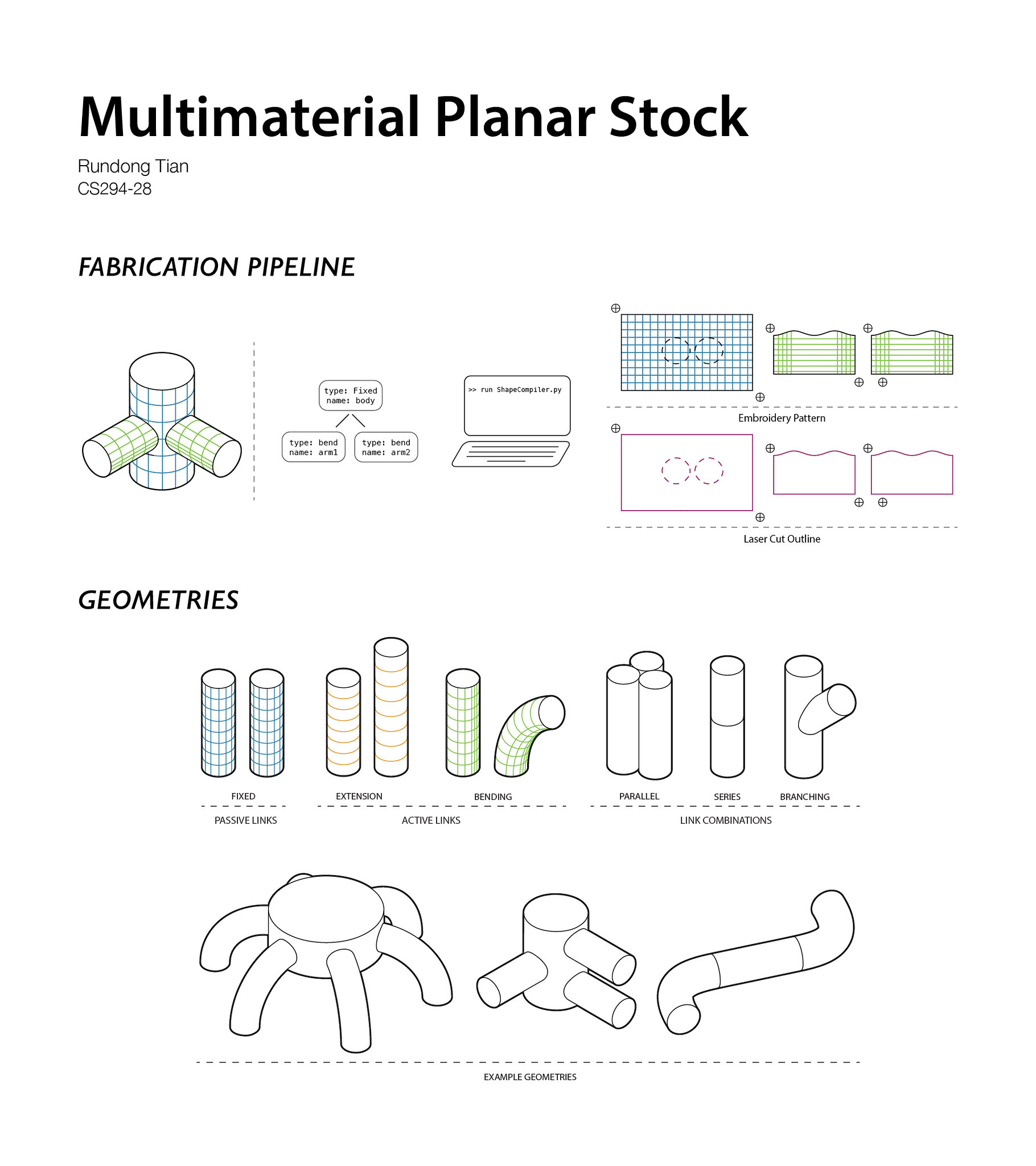
Custom pinch valves

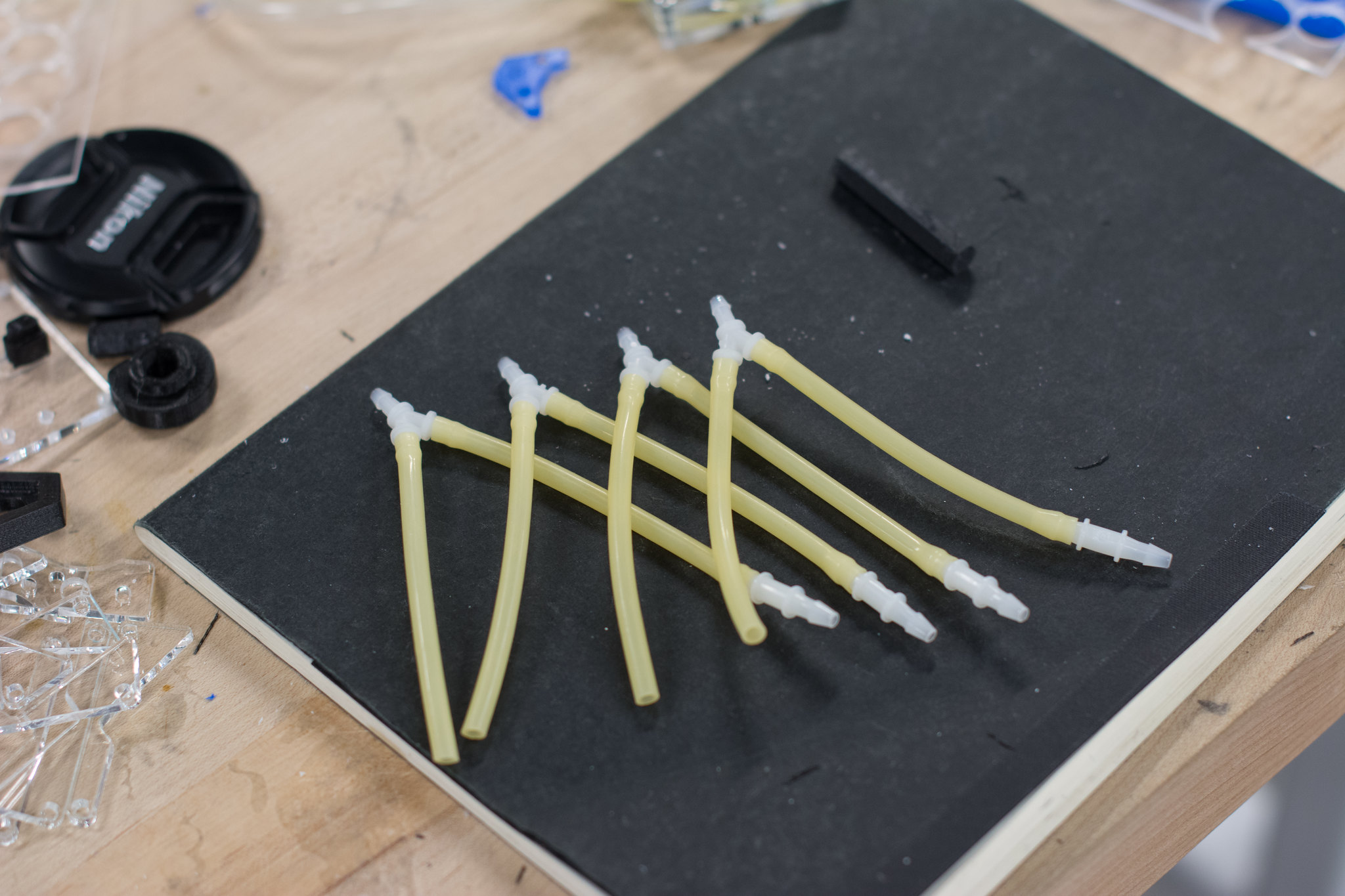
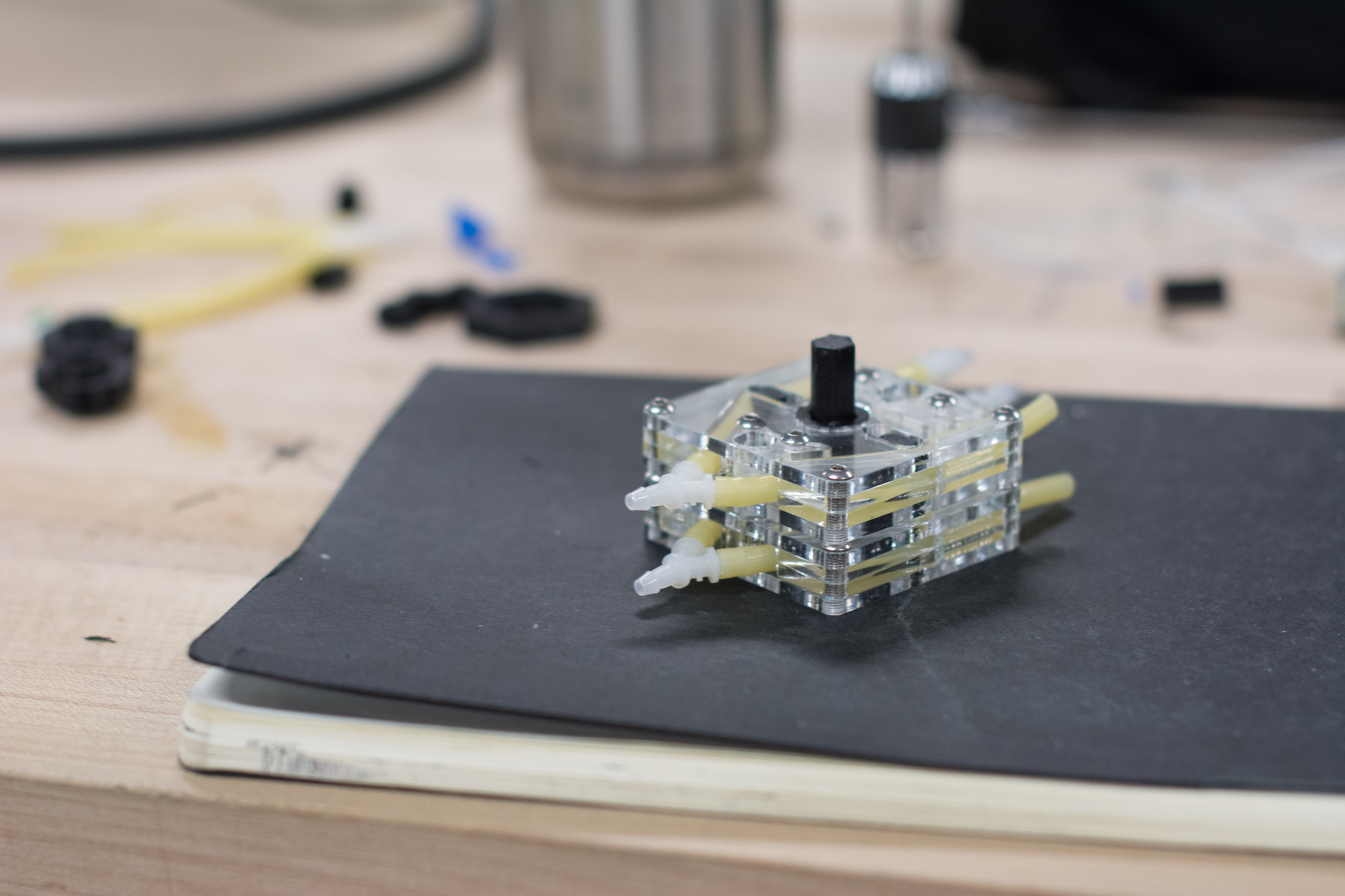
Gripper open
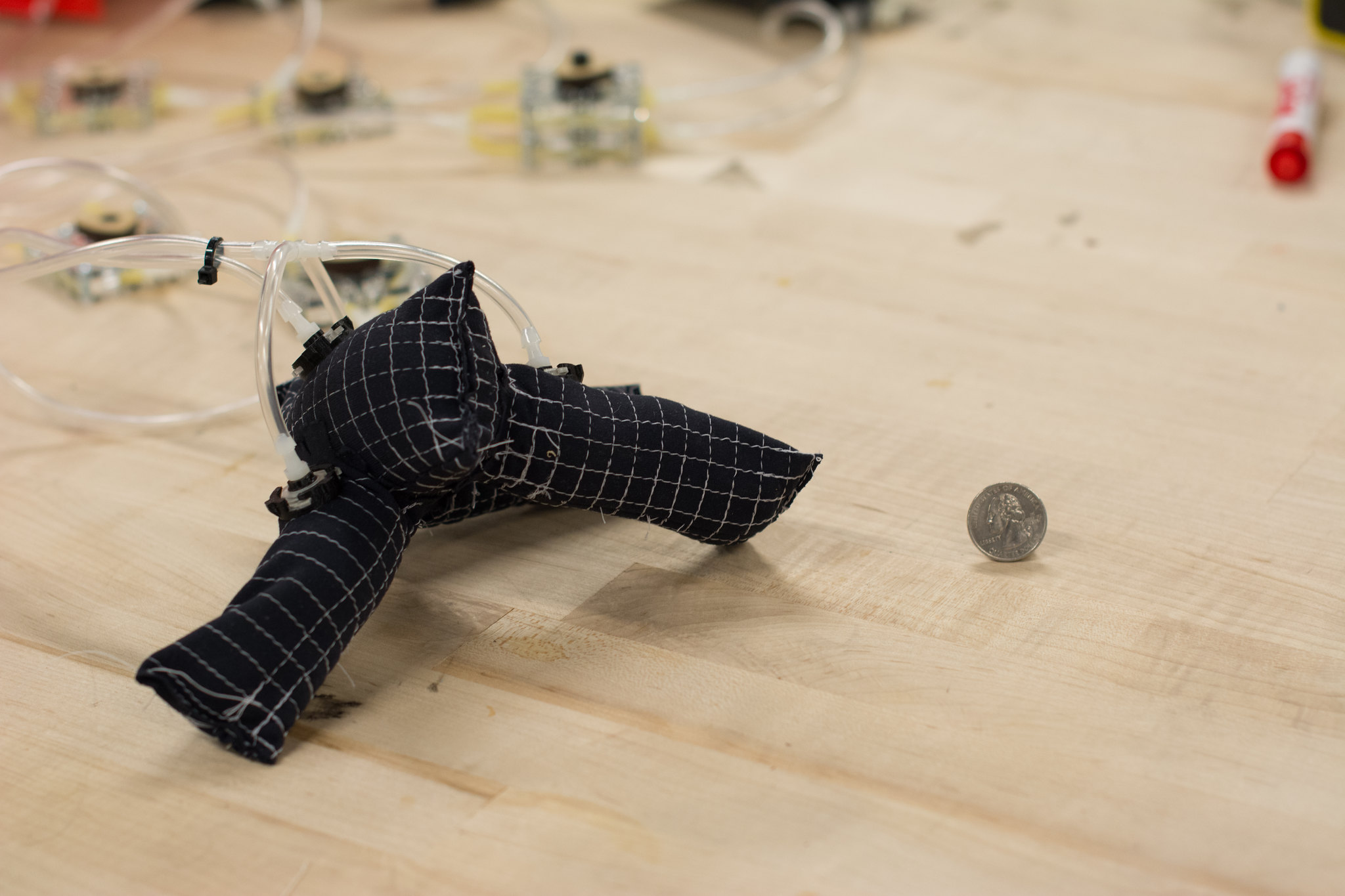
Gripper close
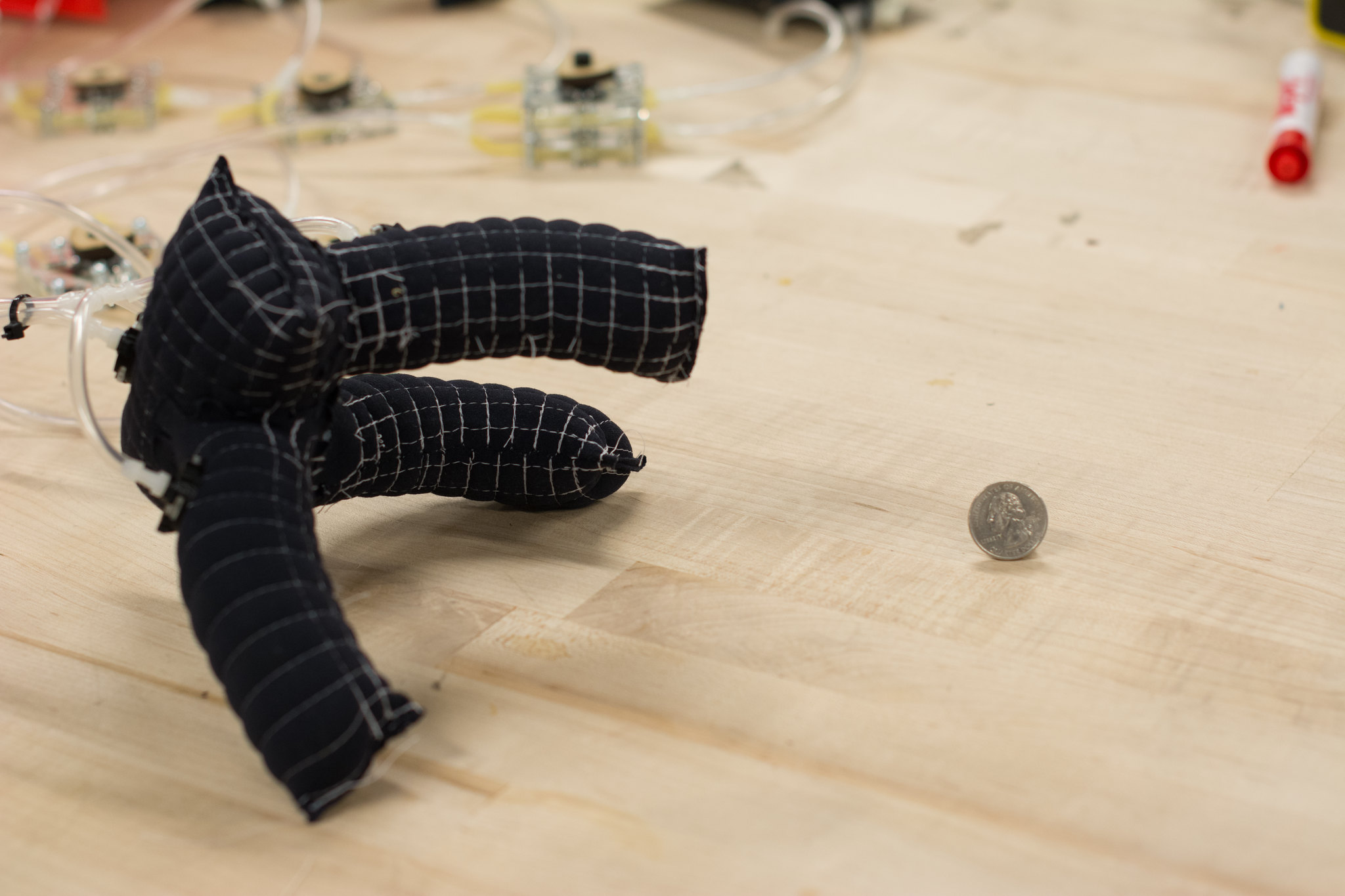
Interface between the balloon and the fabric
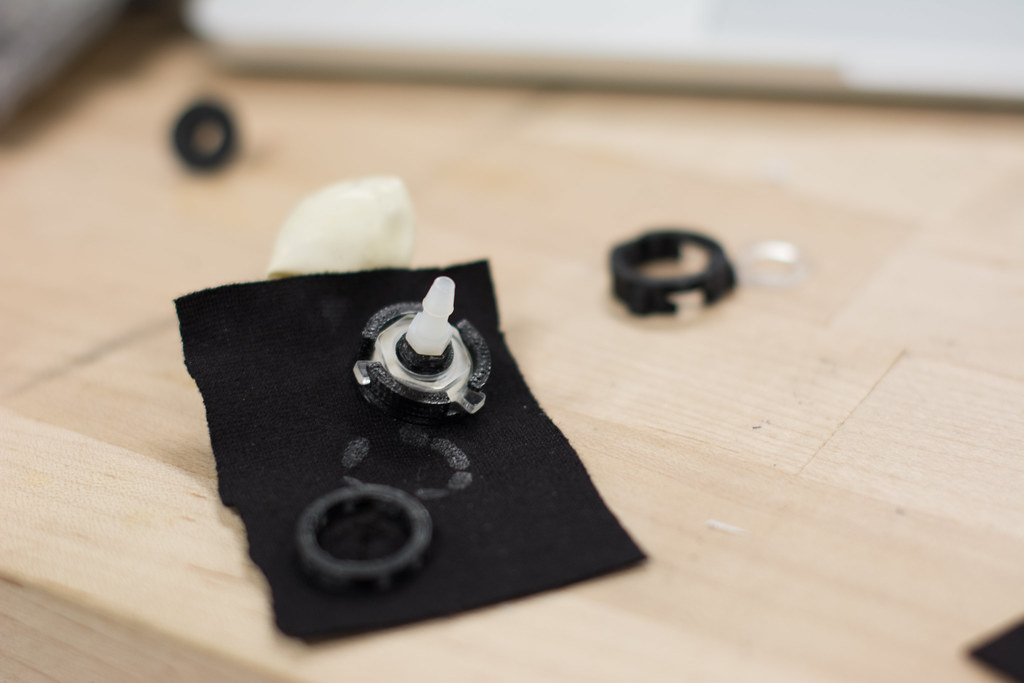
Exploded view of the balloon to fabric adapter
From top to bottom: nylon tubing barb to male thread, laser cut acrylic nut, laser cut acrylic washer, 3D printed balloon barb, balloon receiver.
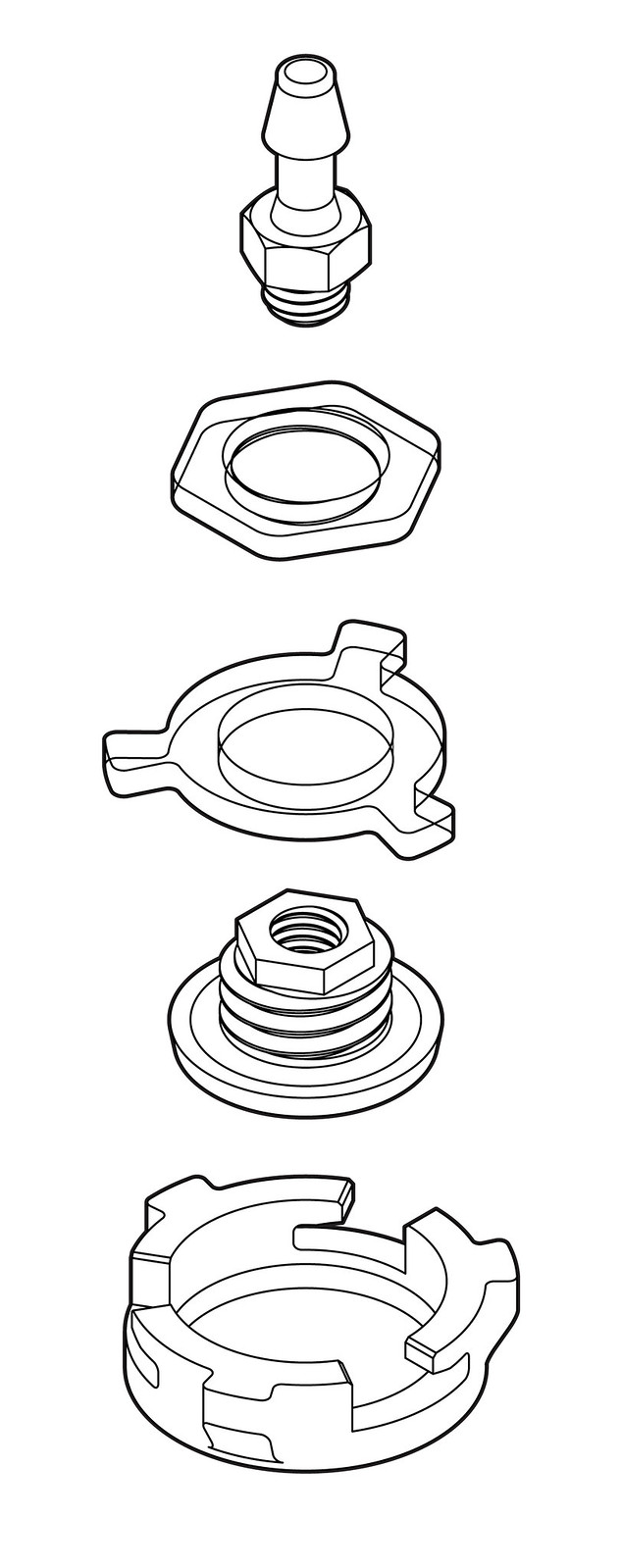
Computational Design and Fabrication
11 Nov 2015
Writing software to generate hardware designs for fabrication.
Computational Design + Fabrication with Jonathan Bachrach (CS294-119)
Below are some mechanisms designed in Python using the Digifab library written by the course staff.
Walkers
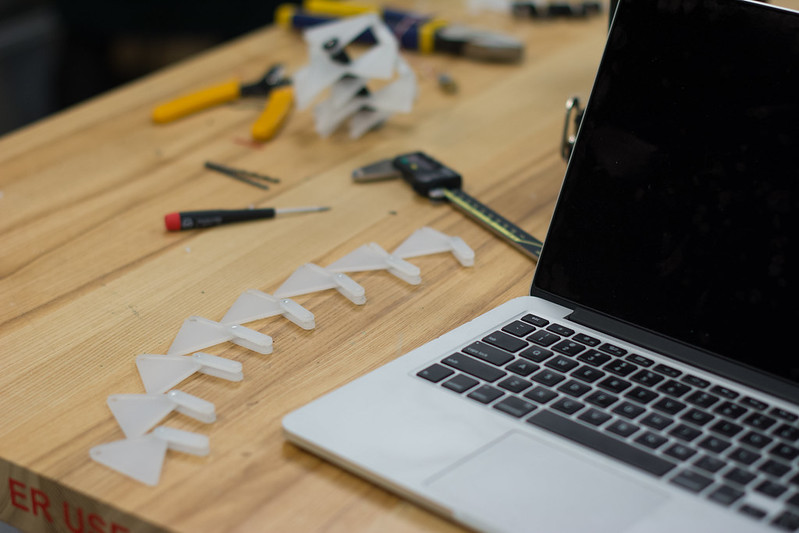
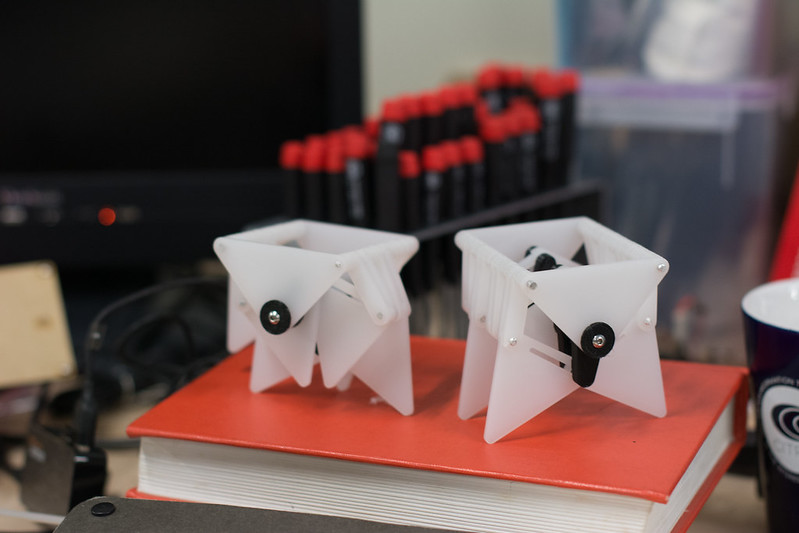

Papercraft gripper
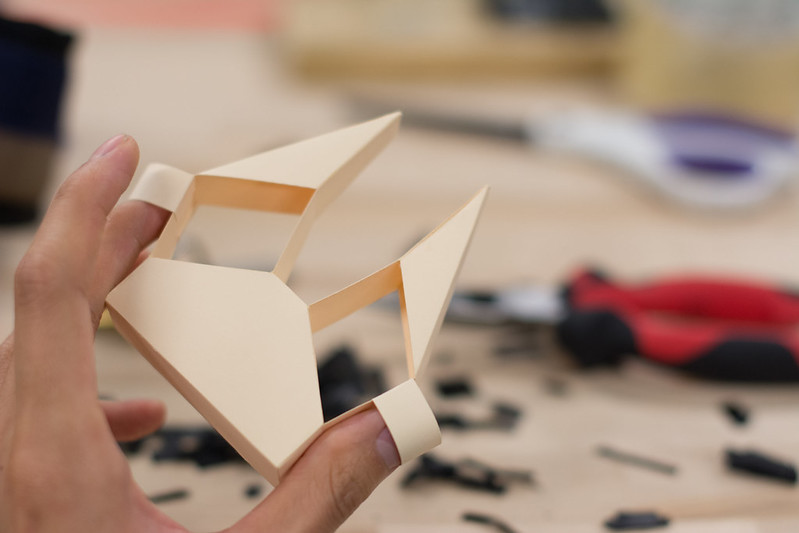
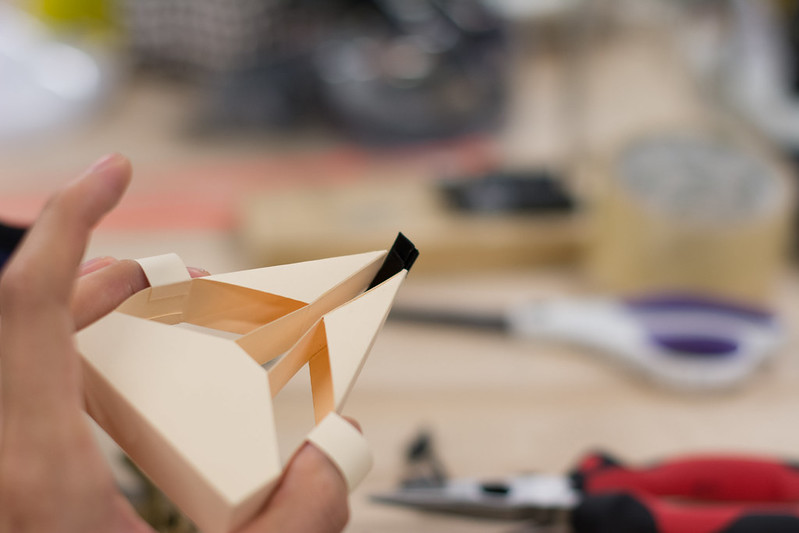
Linkages
Hoberman iris, open and close:
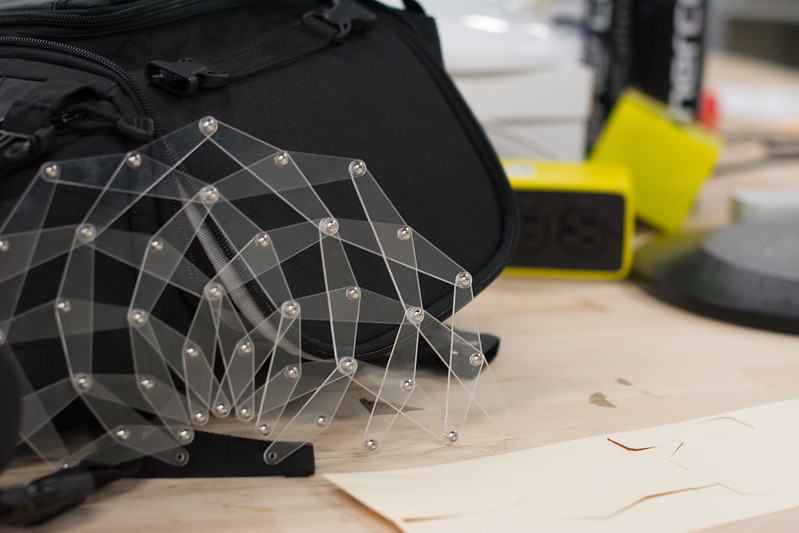
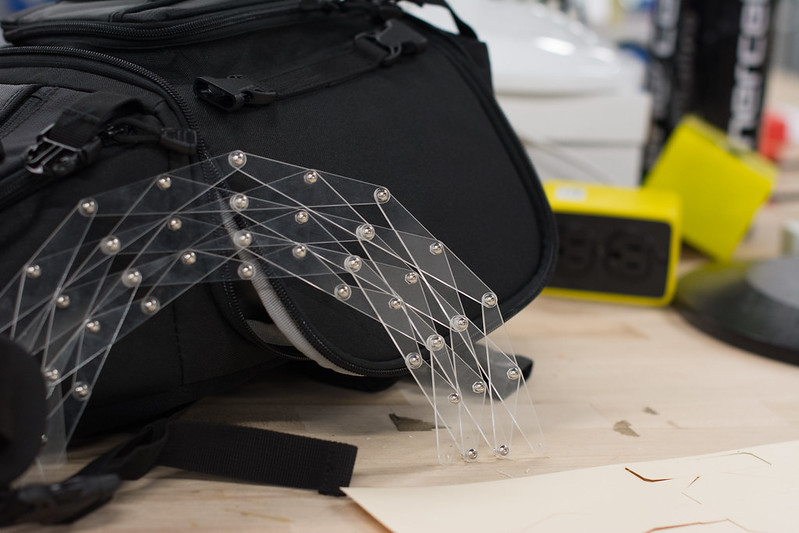
Pantograph with scale ratio of 3:1
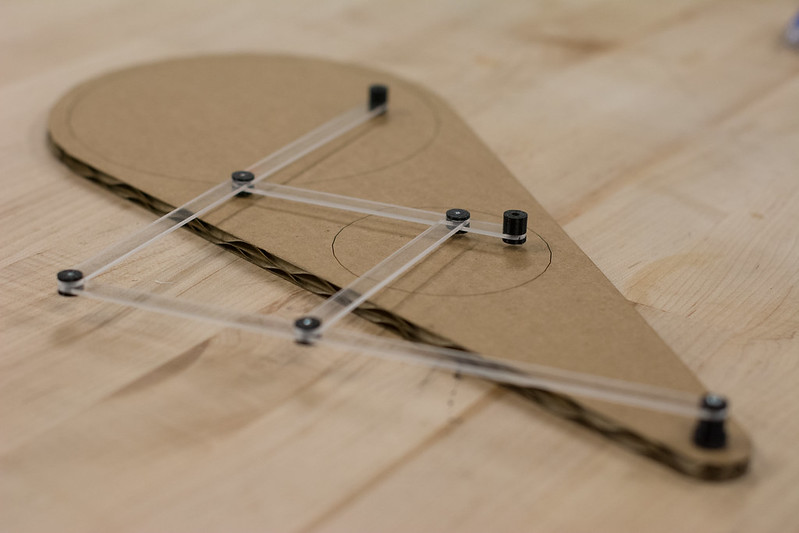
Stash
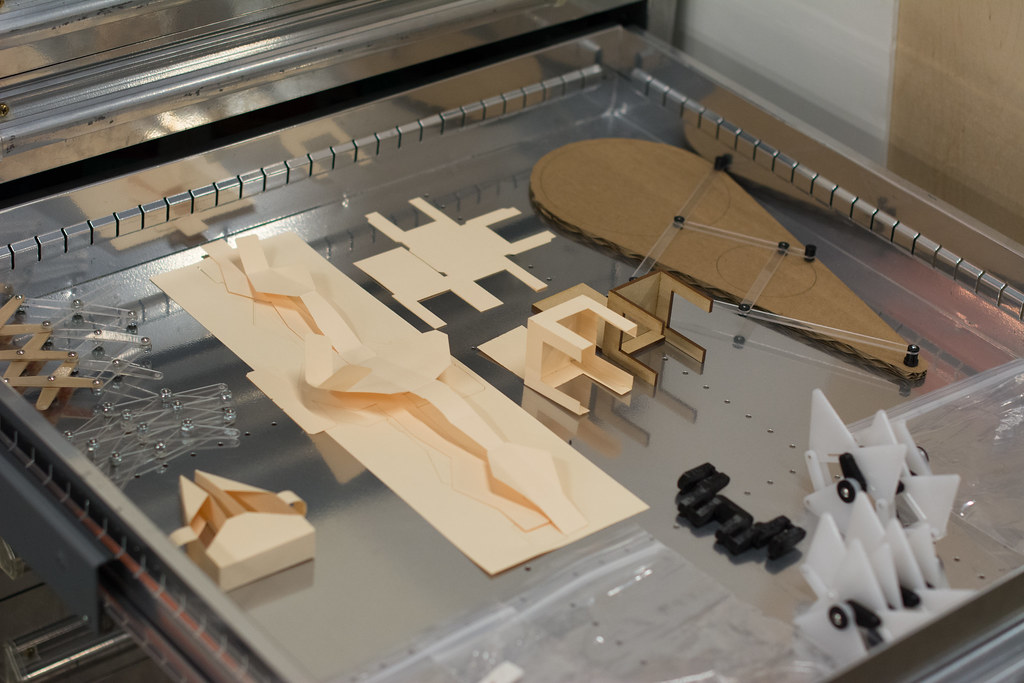
Buttons
11 Nov 2015
Exploring how electromechanical primitives can be directly incorporated into 3D printed geometries.
Momentary button (flexural spring + conductive traces) created using a Voxel8 multi-material 3D printer; components (coin cell, LED) inserted after printing.

Animatronic Fish
10 Dec 2014
Final project for embedded systems (CS249A): Turning an Ikea fish pillow into an animatronic toy.
Collaborators: Ryan Feng, Eric O’neil
Capacitive touch sensors
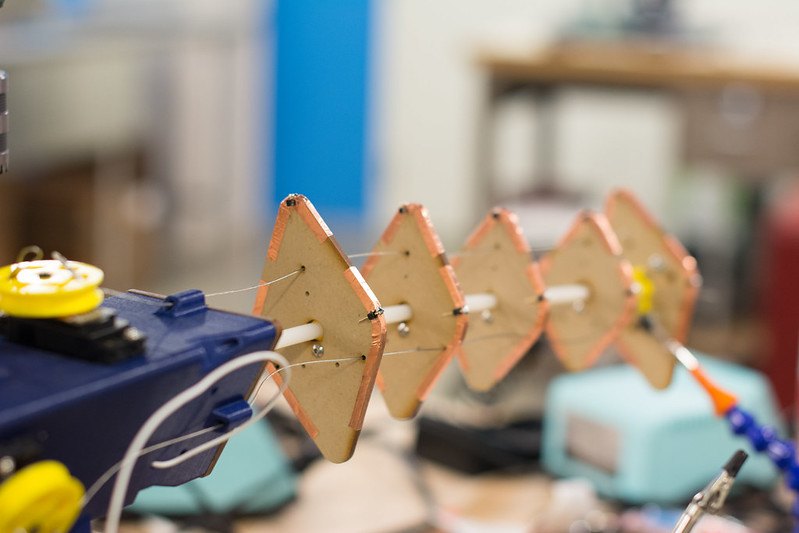
Adding a zipper to the pillowcase
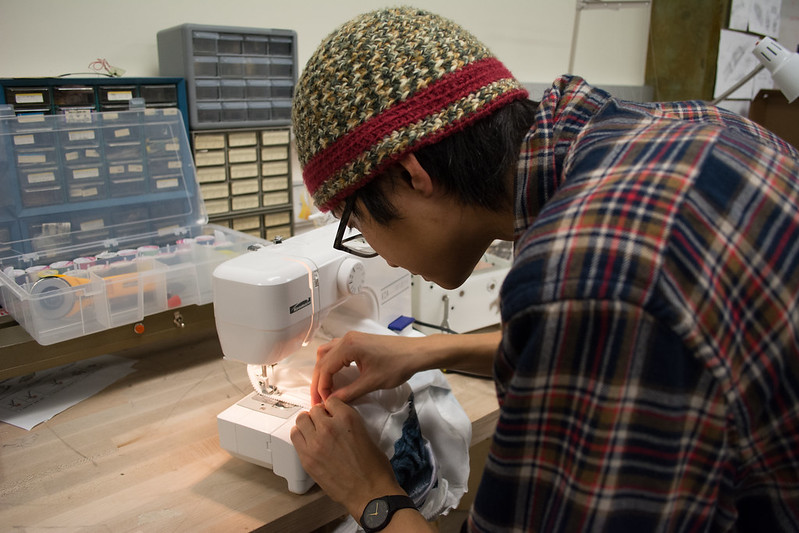
Belly of the beast
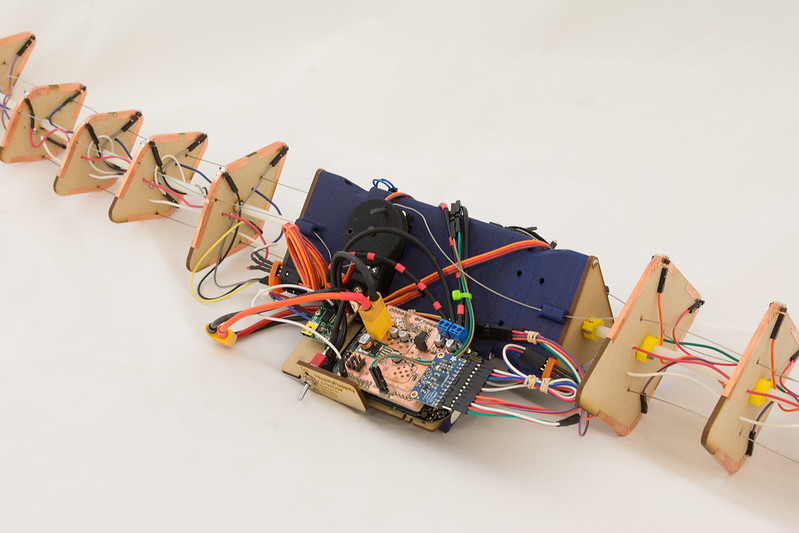
Cable tensioner/fastener
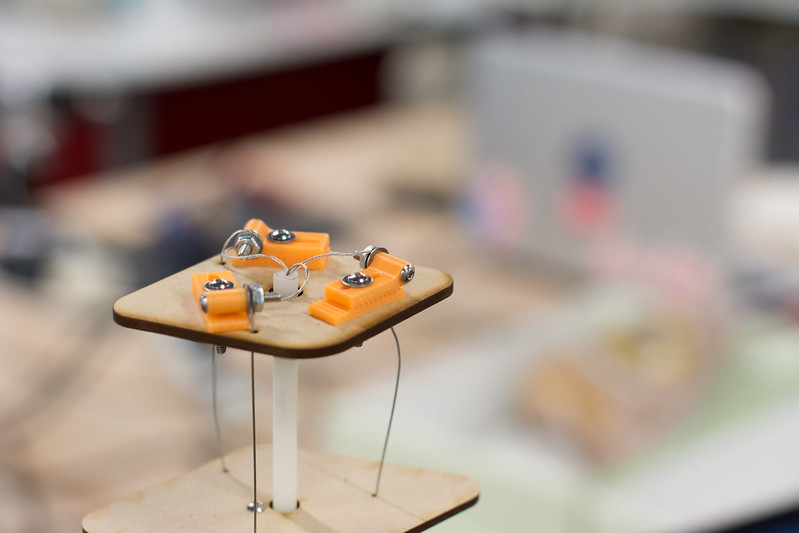
Mbed shield, a power distribution board.
